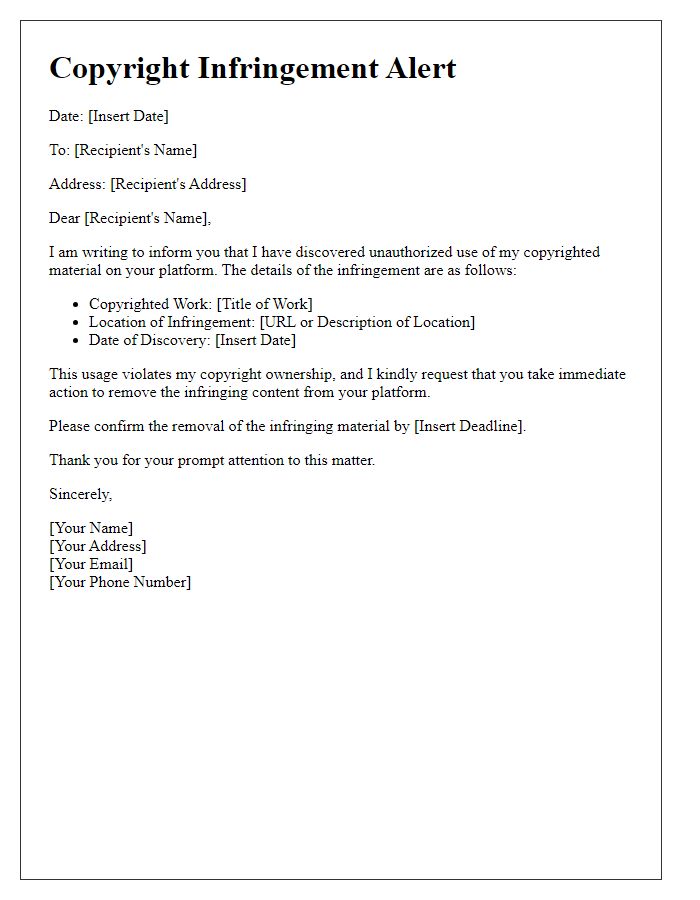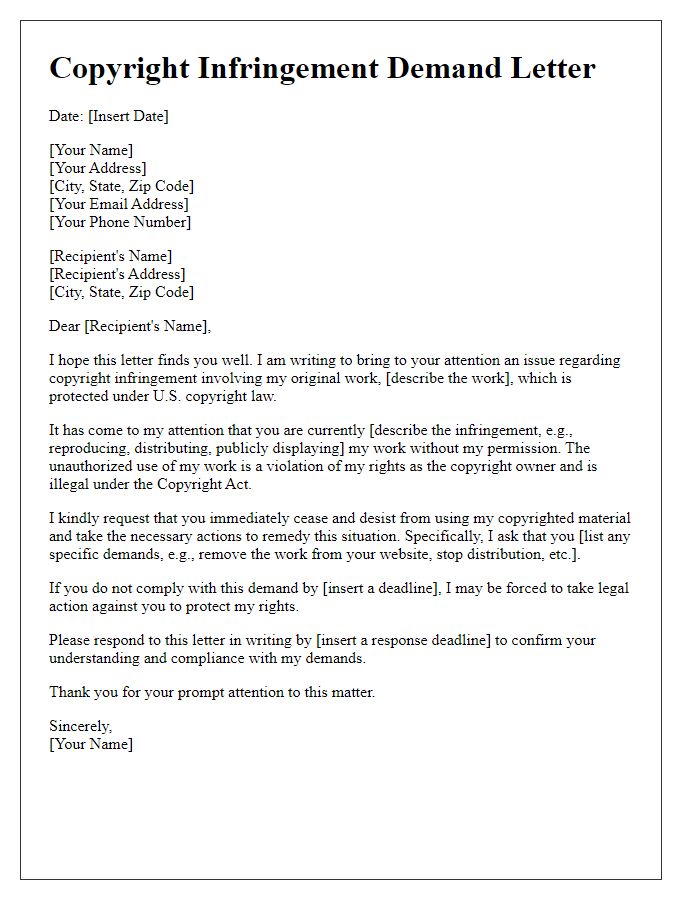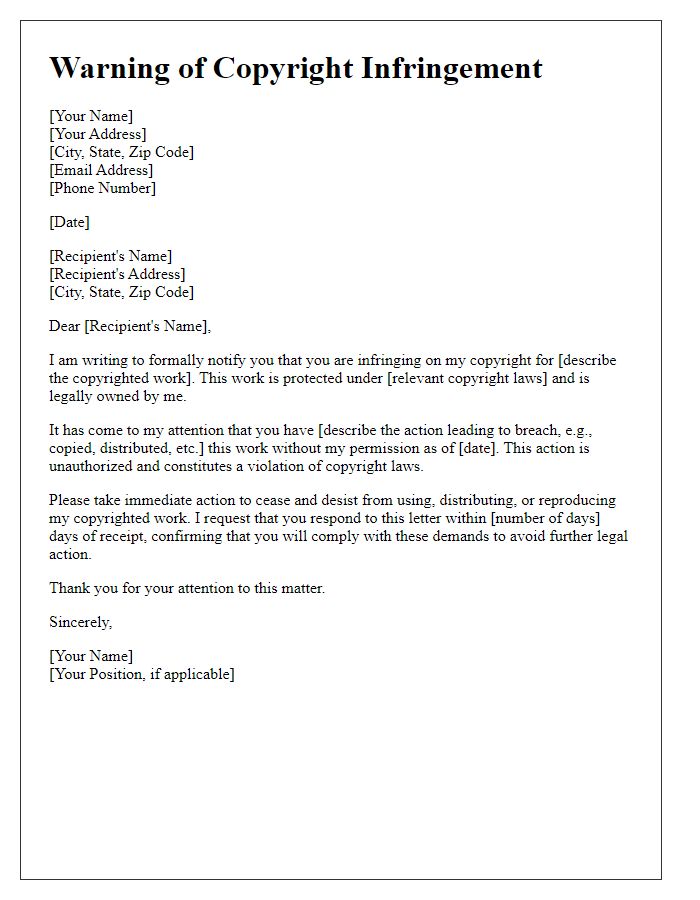Are you facing issues with copyright infringement and unsure how to address it? A well-crafted complaint letter is your first step to protecting your intellectual property and asserting your rights. In this article, we'll guide you through the essential elements of a copyright infringement complaint letter, ensuring you convey your message clearly and effectively. Ready to take action? Let's dive in!

Infringement Identification
A copyright infringement complaint identifies unauthorized use of creative work, such as literary, musical, or visual content. Copyrighted material, which includes original artistic expressions, can be found in various forms ranging from texts (books, articles) to multimedia (songs, videos). The identification process involves pinpointing specific instances of infringement, often using URLs or screenshots as evidence. Events like the unauthorized reproduction of a song on a streaming platform can violate copyright laws, thus necessitating formal complaints. Different jurisdictions have their own copyright regulations, such as the Copyright Act of 1976 in the United States, which outlines the rights of creators. Notification may also be made to the infringer, alerting them to the violation and requesting cessation to avoid potential legal action.
Rights Holder Information
Rights holders owning original content, such as music, artwork, literature, or software, are entitled to protection under copyright law. Infringement complaints can often arise regarding unauthorized use of this content. For instance, a music producer whose audio track appears on a streaming platform without permission can file a complaint. Gathering evidence, such as screenshots or URLs showing the unauthorized use, is essential. The complaint should accurately identify the specific copyrighted work, including registration numbers and titles, to establish ownership. Proper documentation under the Digital Millennium Copyright Act (DMCA) ensures that rights holders can swiftly address and resolve such violations.
Infringed Content Details
Infringed content refers to the specific material believed to be violated within copyright law, which can include various forms of artistic expression such as written text, images, music, or video. Identifying specifics such as the title of the work (for instance, "The Great Gatsby" by F. Scott Fitzgerald), the date of original publication (April 10, 1925), and the copyrighted owner (Charles Scribner's Sons) is crucial. Detailed description must include the location where the infringement occurred (for example, a particular website or social media platform like Instagram or TikTok) along with the URL or any other identifying information (for instance, a link to the infringing content). Additional evidence, such as screenshots or documentation, may also be beneficial to support the complaint. Affected parties should consider direct implications, like loss of revenue or damage to reputation, which may further substantiate their claims.
Legal Statement and Request
A copyright infringement complaint typically addresses unauthorized use of protected works without permission, addressing entities such as individuals or organizations. The notification should identify the copyrighted work, for instance, a specific book published in 2021, and the infringing activity, such as distribution of digital copies via unauthorized websites. The complaint should be sent to the infringer's registered address or legal department. Including a detailed description of the infringement, such as the exact location of the unauthorized content, is essential. Furthermore, emphasizing the potential legal consequences under laws like the Digital Millennium Copyright Act (DMCA) can underscore the seriousness of the complaint. Providing contact information for further communication ensures clarity and responses to resolve the issue amicably.
Contact Information
Contact Information for copyright infringement complaints typically includes necessary details such as the name of the complainant, physical address for legal correspondence, email address for direct communication, and phone number for further inquiries. It's important for the complainant to provide their full legal name or business name if applicable, as well as the address where they can receive official correspondence, which may consist of a street address, city, state, and zip code. An active email address is crucial for swift communication, and providing a phone number allows for prompt follow-ups or clarifications regarding the complaint process. These details help ensure that the copyright infringement claim can be addressed efficiently and effectively.













Comments